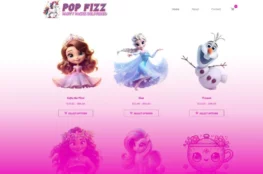“Smash” in South African teen slang is often used to refer to casual sex or the desire to have sex with someone. For example, someone might say “I’d smash” after seeing someone attractive, meaning they’re expressing a desire for a casual sexual encounter. This usage is informal and popularized in certain social media or pop culture contexts.
“E smash” or “E smashing” often takes on a more figurative context, especially in online spaces like gaming environments. It typically refers to finding someone’s online persona or qualities, such as their humor, skills, or style that are appealing or “attractive” in a non-literal sense. Thus esmashing is less about physical attraction and more about being drawn to the personality they project in the digital world.
Trends in slang and online culture can be incredibly obscure to (Millennial) parents, making it tough to differentiate between harmless terms and those with more concerning meanings. Cyber culture often blends and evolves concepts in ways that seem shocking on the surface but are often benign in context.
For example, while millennials might have used “smashing” to refer to sex or attraction, in South Africa’s gaming and online communities, you’ll find 10-year-olds casually talking about “smashing” in the context of playing a tournament with friends with no sexual connotation whatsoever. It’s an entirely innocent usage tied to their shared digital world, not the loaded meaning parents might associate with the term.
In gaming and online interactions, it’s common for slang like this to emerge as a way to express admiration or connection in a casual, playful manner. While the term can occasionally carry a hint of flirtation, it’s often about appreciating the vibe someone brings to the table rather than anything literal or physical.
The term “E smash” also has roots in a quirky game created in South Africa as a form of protest against the e-tolling system. While the game never gained mainstream attention locally or internationally, it was a unique localized event that added a new layer to the term’s context. Over time, this adaptation evolved and took on different meanings, diverging entirely from its original use.
Though Generation Alpha is unlikely to use “E smash” with this historical context in mind, it highlights the importance of not jumping to conclusions about slang. Instead, parents and educators should focus on understanding the context in which these terms are used by teens. Open conversations about their online interactions and feelings can provide valuable insights into what they’re experiencing day-to-day in the digital world.
Memes and phrases are like cultural echoes, shifting meaning as they pass from generation to generation. Take Skibidi Toilet, for instance. Originally created by Georgia-based animator Alexey Gerasimov on his YouTube channel DaFuq!?Boom!, this bizarre series has captivated Generation Alpha, kids born since the early 2010s. Despite not being hosted on YouTube Kids, it’s a hit among elementary school audiences. Gerasimov, a self-taught animator, brought Skibidi Toilet to life in February 2023 using Source Filmmaker, a free 3D modeling tool initially popularized by games like Half-Life 2.
Interestingly, tools like Source Filmmaker have roots in the gaming world of the early 2000s, when modders and gamers began exploring 3D modeling to create memes, machinima, and game parodies. These creations often started as in-jokes or niche content for gaming communities but eventually spilled over into broader meme culture. Skibidi Toilet is a modern evolution of this trend—an absurdist blend of animation, gaming culture, and meme humor that demonstrates how digital tools and platforms can spawn new cultural phenomena for entirely different audiences.
If you’re talking to kids or teens about slang, it’s a great opportunity to have a broader conversation about respect, boundaries and context when using language. Starting with light, non-judgmental questions about slang they use or hear, like the ones mentioned, can help create an open dialogue and build trust.




